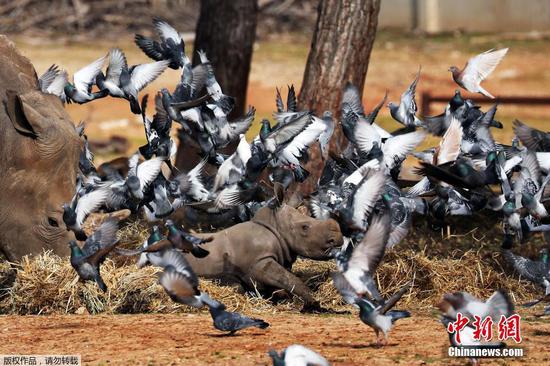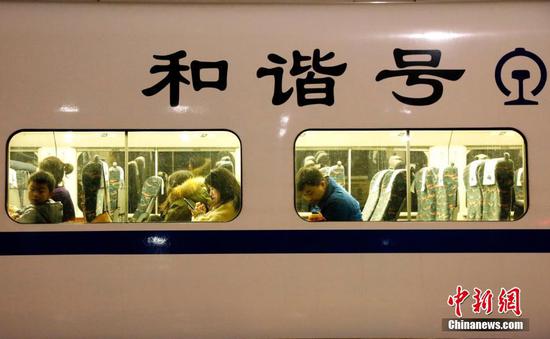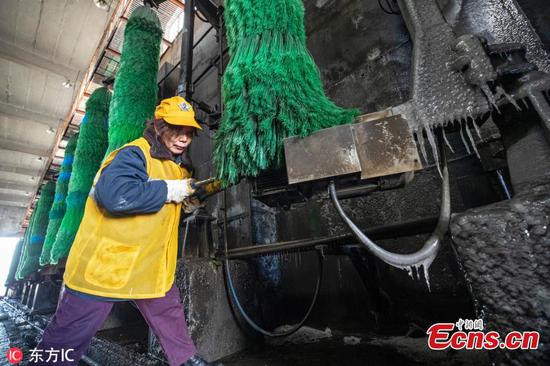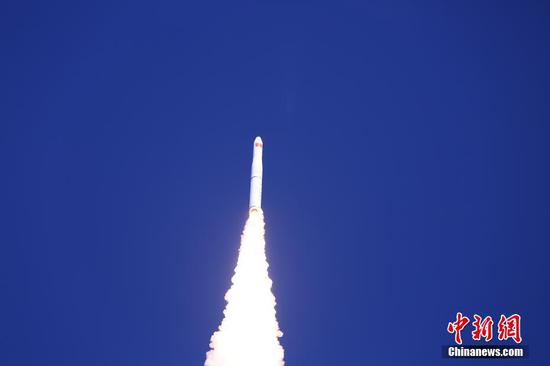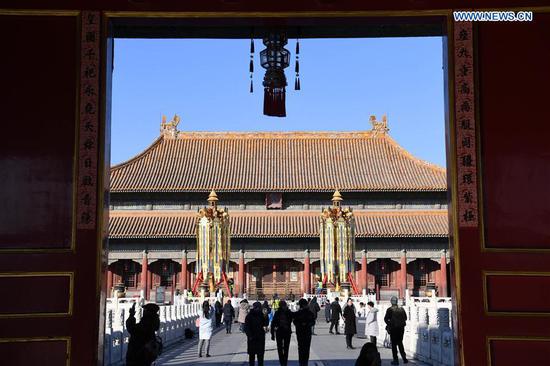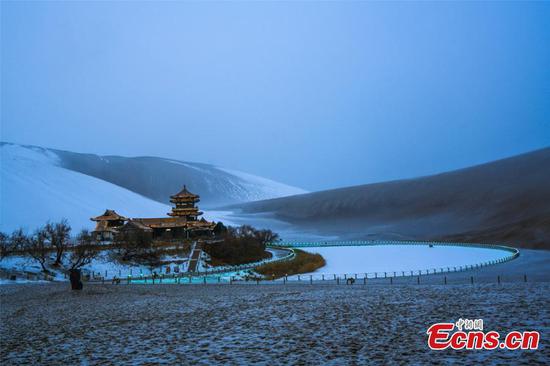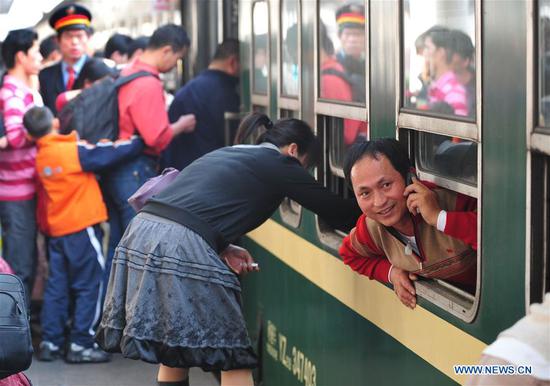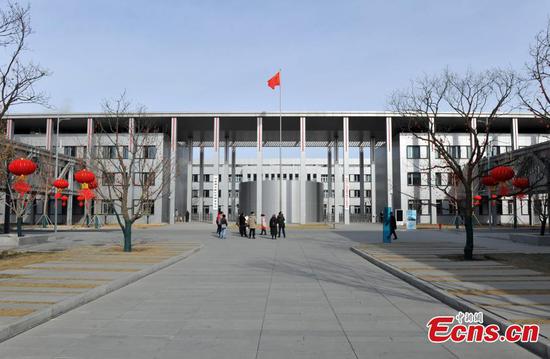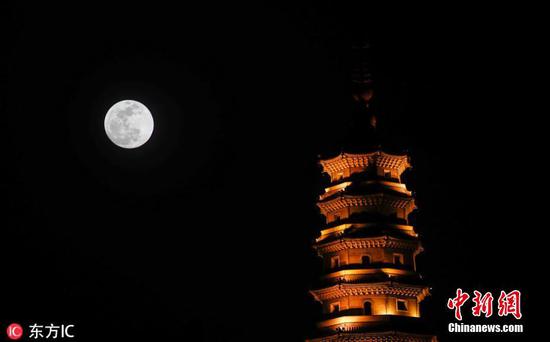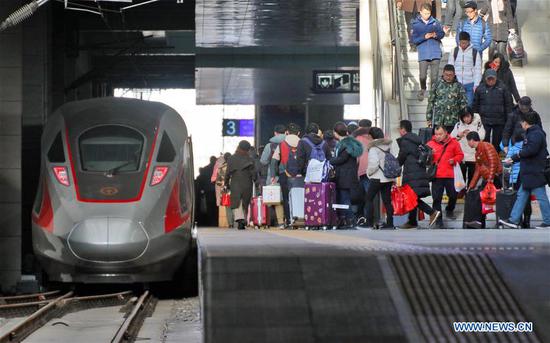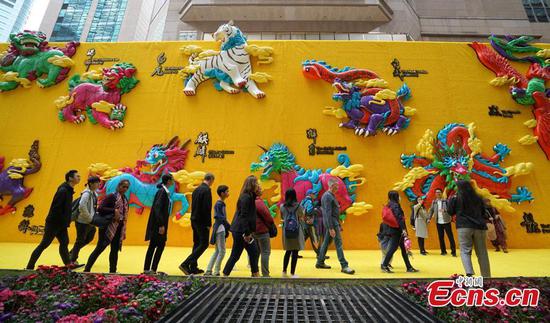Nearly 70 years after the founding of New China in 1949, the Chinese economy expanded to over 90 trillion yuan (about 13.28 trillion U.S. dollars) in 2018 from roughly 67.9 billion yuan in 1952.
China contributed over 70 percent to global poverty reduction and nearly 30 percent to the world's economic growth, according to official figures.
At first glance, China's A+ economic performance seems to be a matter of course as the country's population is a staggering 1.3 billion. Low labor costs, a huge consumption market and robust external exchanges all put China in an advantageous position.
To better understand the Chinese economy, however, it is worth delving into China's political and economic system which has provided institutional support from the following 10 aspects for the economic rise of China.
PROGRESSIVE REFORM
Chinese policymakers innovatively started the reform and opening-up policy in 1978 to gradually eliminate the constraints of a planned economy, nurture private sectors and advance state-owned enterprise reforms step by step. Such reforms helped secure social stability and created favorable conditions for continuous improvement.
By adopting a prudent yet accommodative regulatory approach, the Chinese government has successfully nurtured the entrepreneurial spirit. As a result, the number of market entities has seen exponential growth, to the tune of more than 100 million in 2018, with many Chinese private enterprises becoming established global market leaders.
Through further reform, China shall have the market to play the decisive role in resource allocation while the government shall play its role better.
EXPERIMENTATION APPROACH
In line with the progressive philosophy, the Chinese economy finds its way upward and onward by experimentation. The country tends to create pilot programs and policies in certain regions to test their effectiveness and perfect them before rolling them out nationwide.
The opening-up campaign that transformed China into a manufacturing giant started in a coastal village in southern China now known as Shenzhen, while the country's agricultural reform took place in an eastern village. Latest examples include the pilot free trade zones and a negative-list approach for market access.
The famous saying from Deng Xiaoping, "crossing the river by feeling the stones," captures the process of pioneering with trials. The experimentation approach makes it easy to fine-tune policies during the implementation process and keep risks from spilling over to the whole country.
STRATEGIC PLANNING
While China is no longer a planned economy, strategic planning does play a key role in keeping the country's economic growth in the fast lane. Setting targets, outlining plans and making all-out efforts to achieve them constitute a major plot of China's success story.
The most notable case of strategic planning would be China's five-year plans, mapping social and economic development frameworks with rather specific goals and reform initiatives. Initiated in 1953, China's 13 five-year plans can effectively show how China transitions from a rural country to an industrial powerhouse and now toward a rising consumer and service provider.
Stephen Roach, a senior economist with Yale University, observed that making medium to long-term plans avoids policy short-sightedness and helps push agenda through.
PEOPLE FIRST
The country's seven-decade economic development centers on one major theme: improving people's livelihoods. This has become one fundamental goal and a consistent priority in policy-making despite changes of leaderships.
To serve the purpose, China has made it a top priority to lift all people out of poverty by 2020 and has launched the supply-side structural reform to cater to people's growing demands for higher-quality lives, ranging from safer milk to cleaner air.
People-oriented policymaking ensures a stable social environment for economic growth and unleashes the potential of the masses to work for a better life. China's GDP per capita has risen from less than 30 dollars to nearly 10,000 dollars in the past 70 years.
DEMOCRATIC CENTRALISM
Democratic centralism combines the strengths of both democracy and efficiency, helps forge united forces to govern the country and avoids impeding from partisan politics or self-consuming conflicts for better policy execution.
Given China's vast territory, huge population and complicated geopolitical environment, its governance is anything but easy. By sticking to democratic centralism, the Communist Party of China (CPC) and state organs have managed to maximize governance effectiveness and national interests for the people.
In 2017, China ranked 24th in terms of national governance among 192 surveyed countries, according to a report released by the East China University of Political Science and Law. It took seventh place when governance difficulty was factored into the equation, and it was the only developing country to enter the top 10 list.
REGIONAL LAUNCHPADS
For a country as vast and varied as China, regional differences pose challenges as well as opportunities for development. China has taken advantage of each region's own strengths while coordinating their development.
China's economic growth took off in coastal areas. Now the western region has become a popular investment destination thanks to a string of supportive policies.
The central government has rolled out regional growth strategies for the Beijing-Tianjin-Hebei region, the Yangtze River economic belt and the Guangdong-Hong Kong-Macao Greater Bay Area, which become growth engines as coordinated regional development speeds up urbanization and nurtures local pillar industries.
MACRO REGULATION TOOLKIT
China's policymakers have many economic levers at hand to deal with challenges. History has proven China's leeway in maneuvering its macro policies and capability of maintaining stable economic growth in case of global economic turbulence.
A case in point is the financial meltdown in 2008, which is seen by many economists as the worst crisis since the Great Depression. Thanks to the targeted macro regulation measures, China's economic growth has survived largely intact and become a bright spot in a gloomy world economy.
Without exporting a crisis or conducting protectionism, China has led the global economic recovery. Despite greater difficulties ahead, China is still confident in keeping economic growth within a reasonable range by innovating and improving its macro regulation.
SELF-REFORM
Despite the economic achievement, China's reform momentum has remained unabated, and the government is working to cut red tape, streamline administration and create a level playing field to enhance the efficiency of the economy.
Over the past five years, China has held at least 45 high-profile meetings on advancing reforms, during which 400 documents and 1,932 reform plans have been launched.
The CPC has taken a series of steps to enhance internal supervision, tackle corruption, create a sustainable development environment and foster both domestic and international demand.
OPEN-MINDEDNESS
China has pursued development with its door open. Openness has become a trademark of China.
Without being open-minded, China could not have come up with the reform and opening-up policy to learn from developed economies or launched the Belt and Road Initiative to share common growth.
Although the world is witnessing rising trade protectionism, the Chinese government supports an open and inclusive world economy, takes efforts to broaden market access, eases foreign equity restrictions, and lowers import tariffs. It organized the world's first national-level import-themed exposition last November.
PROFOUND CULTURE
Chinese culture has been evolving, but there are some fundamental features that have remained unchanged for thousands of years, including a strong collective spirit and the love of harmony.
"There is a lot to respect about the Chinese culture and approach that led to its remarkable accomplishments," according to Bridgewater Associates founder Ray Dalio.
In Chinese, the word "country" is pronounced as "guojia," or a combination of state and family, which indicates a close bond between individuals, their families and the motherland.
That is why for the honor and well-being of themselves, their families and country, Chinese people have been diligently working and living a full life.











